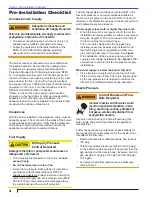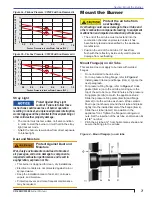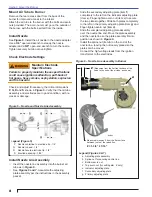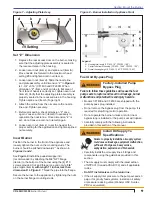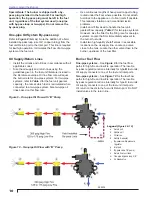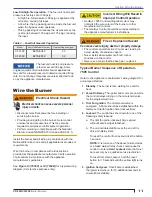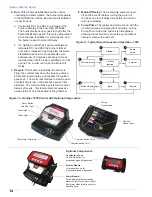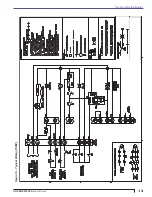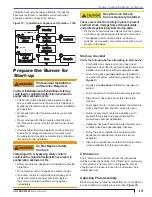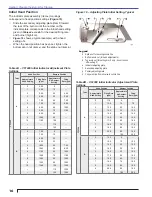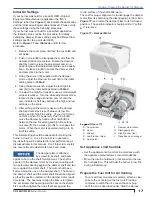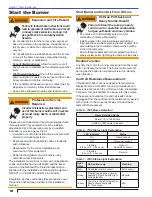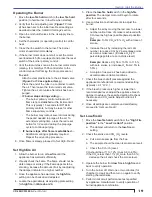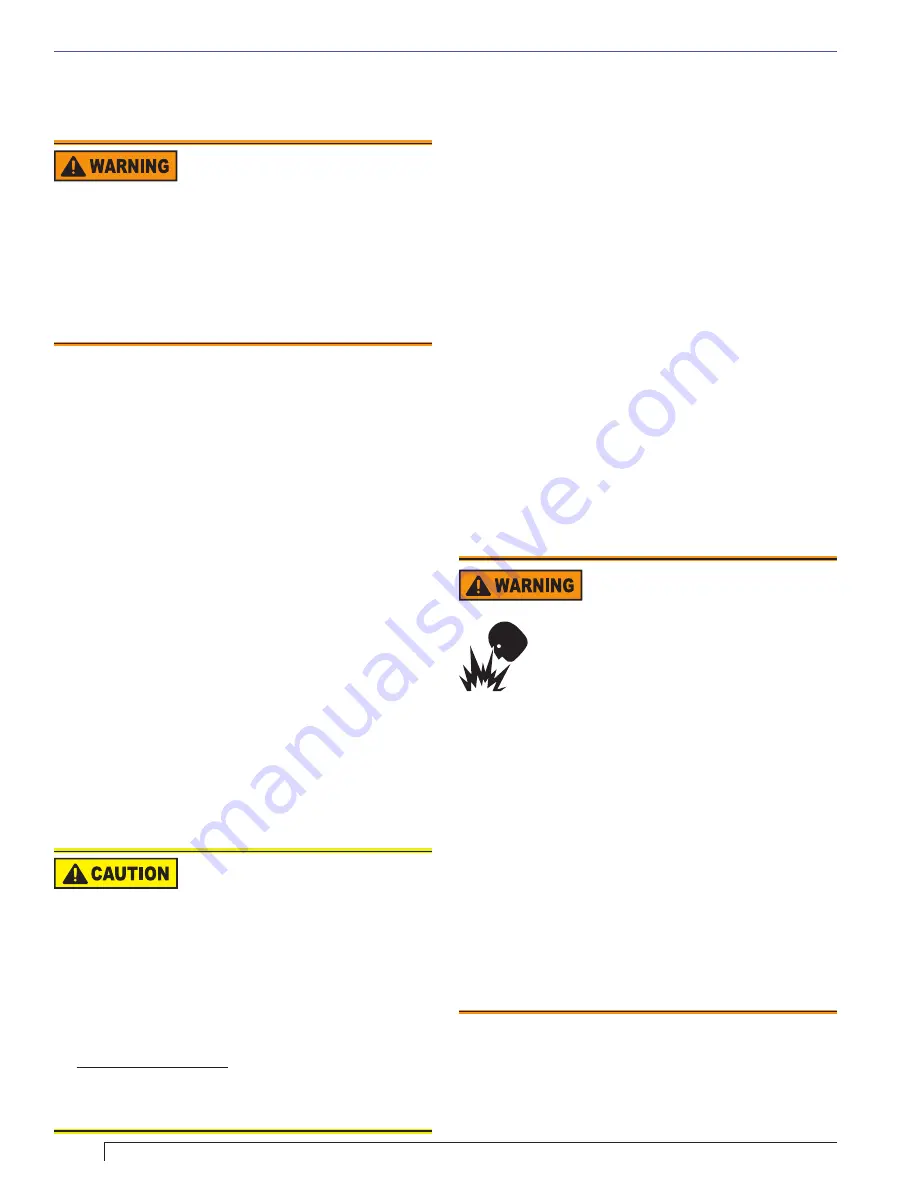
4
Pre-Installation Checklist
Combustion Air Supply
The fuel supply piping and tank must provide #1 or #2
fuel oil at pressure or vacuum conditions suitable for
the fuel unit (oil pump) on the burner. Refer to fuel unit
literature in the literature envelope in the burner carton to
verify allowable suction pressure.
If fuel supply is level with or higher than fuel unit:
When the fuel unit is not required to lift the oil, the
installation is usually suitable for either a one-pipe or
two-pipe oil system. The oil pressure at the inlet of
the fuel unit must not exceed 3 psig.
The fuel unit is shipped with the by-pass plug
installed. Leave the by-pass plug installed for all
low/high
fi
ring burners, regardless whether one-
pipe (with by-pass loop) or two-pipe. See
Figure
9
for installation of the by-pass loop required for
one-pipe fuel supply installations. See
Figure 10
for
connections to the fuel unit for two-pipe fuel supply
installations.
When fuel supply is below the burner fuel unit:
Use a two-pipe oil system when the fuel unit must
lift the oil more than 8 feet. The return line provided
by the two-pipe system is needed to minimize the
effects of air-related problems during operation.
Nozzle Pressure
○
○
○
The burner requires combustion air and ventilation air
for reliable operation. Assure that the building and/or
combustion air openings comply with National Fire
Protection Standard for Oil-Burning Equipment, NFPA
31. For appliance/burner units in con
fi
ned spaces, the
room must have an air opening near the top of the room
plus one near the
fl
oor, each with a free area at least
one square inch per 1,000 Btu/hr input of all fuel burning
equipment in the room. For other conditions, refer to
NFPA 31 (CSA B1139-M91 in Canada).
If there is a risk of the space being under negative
pressure or of exhaust fans or other devices depleting
available air for combustion and ventilation, the
appliance/burner should be installed in an isolated room
provided with outside combustion air.
Clearances
With the burner installed in the appliance, there must be
adequate space in front of and on the sides of the burner
to allow access and operation. Verify that the clearance
dimensions comply with all local codes and with the
appliance manufacturer’s recommendations.
Fuel Supply
Adequate Combustion and
Ventilation Air Supply Required
Failure to provide adequate air supply could result in
asphyxiation, explosion or
fi
re hazards.
The burner cannot properly burn the fuel if it is not
supplied with a reliable combustion air source.
Follow the guidelines in the latest editions of the
NFPA 31 and CSA-B139 regarding providing
adequate air for combustion and ventilation.
y
y
Oil Supply Pressure
Control Required
Damage to the
fi
lter or pump seals could cause oil
leakage and a
fi
re hazard.
The oil supply inlet pressure to the burner
cannot
exceed 3 psig
.
Do not install valves in return line.
Insure that a pressure limiting device is installed in
accordance with the latest edition of NFPA 31.
Gravity Feed Systems: Always install an anti-siphon
valve in the oil supply line or a solenoid valve (RWB
Part # 21789) in the pump/nozzle discharge tubing
to provide backup oil
fl
ow cut-off protection.
y
y
y
y
Correct Nozzle and Flow
Rate Required
Incorrect nozzles and
fl
ow rates could
result in impaired combustion, under-
fi
ring, over-
fi
ring, sooting, puff-back of
hot gases, smoke and potential
fi
re or
asphyxiation hazards.
Use only nozzles having the brand,
fl
ow rate (gph),
spray angle and pattern speci
fi
ed by the appliance
manufacturer.
Follow the appliance manufacturer’s speci
fi
cations for
the required pump outlet pressure for the nozzle, since
this affects the
fl
ow rate.
Nozzle manufacturers calibrate nozzle
fl
ow rates at
100 psig.
This burner utilizes pressures higher than 100 psig,
so the actual nozzle
fl
ow rate will be greater than the
gph stamped on the nozzle body. (Example: An 8.00
gph nozzle at 150 psig = 9.80 gph and at 300 psig =
13.86 gph)
For typical nozzle
fl
ow rates at various pressures
refer to Table 1.
y
y
y
Section: Pre-Installation Checklist




